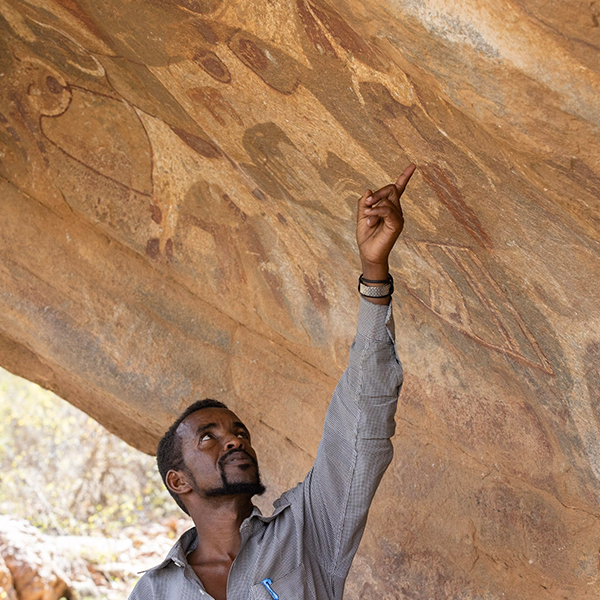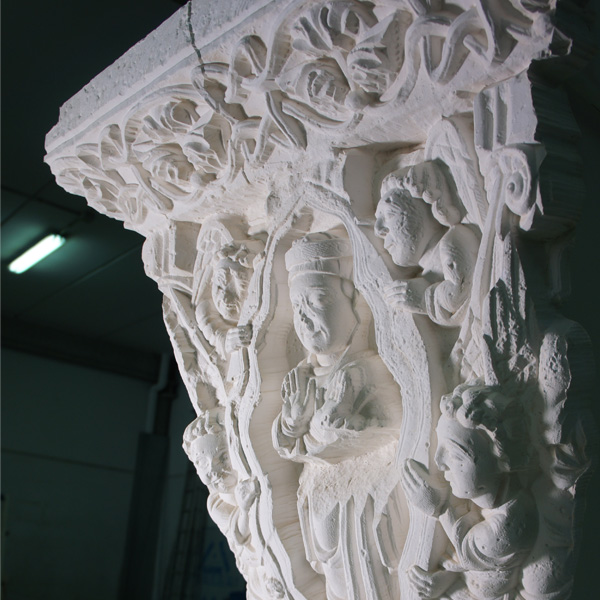In 2018-2019, the Annunciation has undergone a complex process of cleaning and conservation with the intention of restoring its visual integrity and safeguarding it from the detrimental effects of pollution. The results were presented to the public as the centrepiece of the exhibition Fra Angelico and the Rise of the Florentine Renaissance at the Prado (May to September 2019).In-depth documentation is integral to current conservation practice. As part of the Annunciation’s conservation the Prado team performed an array of technical studies including high-resolution visible colour photography, infra-red reflectography and X-ray radiography, all of which enabled them to better understand the painting’s historical as well as its present condition.
Recording in 3D and colour
Factum Foundation contributed to the documentation effort by carrying out a high-resolution 3D recording of the painting following the restoration. The 3D scan is of particular interest in this case due to the superb surface work executed by the artist. The fine relief of the Annunciation was digitised for the first time ever using the Lucida 3D Scanner – designed in-house to record low relief surfaces in high-resolution 3D – to produce a precise record of the panel’s shape and texture at this moment in time. The Factum team also recorded colour data using panoramic photography, which works by merging multiple overlapping images into a single high-resolution image file.
The video and images below provide an insight into how we recorded the data in the Prado's conservation department:

Factum team with the Lucida 3D Scanner and The Annunciation in the Prado's Conservation Department © Factum Foundation

Recording Fra Angelico's Annunciation with the Lucida 3D Scanner © Factum Foundation

As the Lucida laser moves over the panel, it is deformed by the surface relief – the deformations are captured by cameras positioned either side of the laser and turned into 3D data by specialised software © Factum Foundation

Checking the quality of the Lucida data during the recording © Factum Foundation
The colour information was mapped onto the 3D data to produce the ‘multi-layered image browser’ that can be seen at the top of the page. By playing with the zoom and browser settings the user gets an unconventional view of the painting, one that shines a light on the complex relationships between surface relief and colour. The images below show some of the most remarkable details from the painting together with the corresponding surface relief:

Detail from the Annunciation : the Archangel Gabriel. The 3D data enables one to see the pronounced punch marks in the Archangel's gilded nimbus.

[Left] Detail from bottom left-hand corner: dark purple carnation amongst different flowers. – [Right] The same detail shown in 3D – note the relief of the carnation flowers.

Detail from The Annunciation – the Virgin Mary, and its surface relief.

Detail from the Archangel Gabriel's wings and its surface relief.
The digital 3D and colour data will be provided to the Prado in various formats and incorporated into the museum’s exhaustive archive of information on the Annunciation, a valuable multi-dimensional resource that will aid in the future conservation, study and dissemination of this masterpiece of the Italian Renaissance.
The predella was scanned in February 2020.
Carlos Bayod, Teresa Casado, Gabriel Scarpa and Oscar Parasiego recorded The Annunciation for Factum Foundation.
With thanks to Cristina Alovisetti, Enrique Quintana and José de la Fuente from the Museo del Prado.





